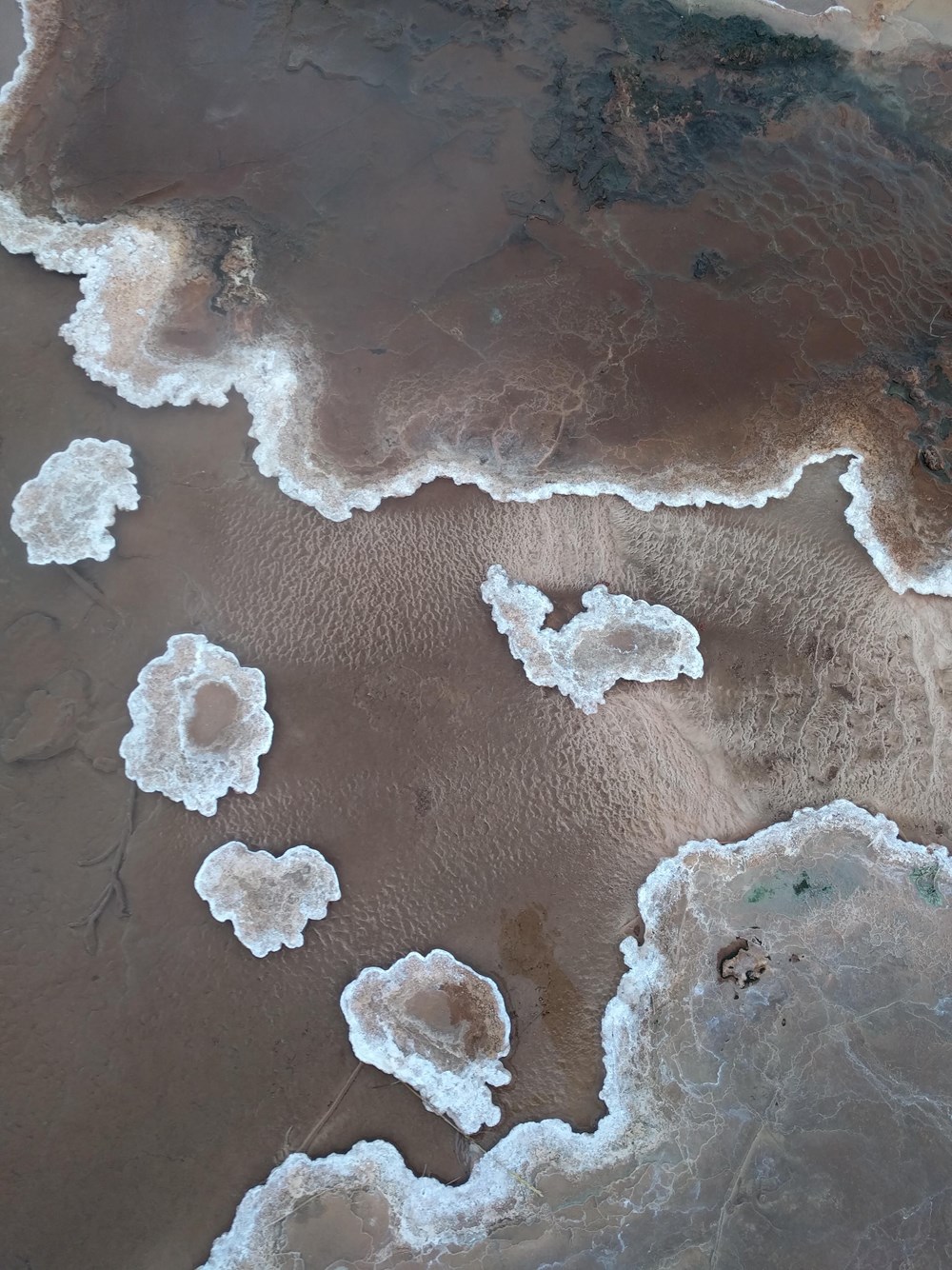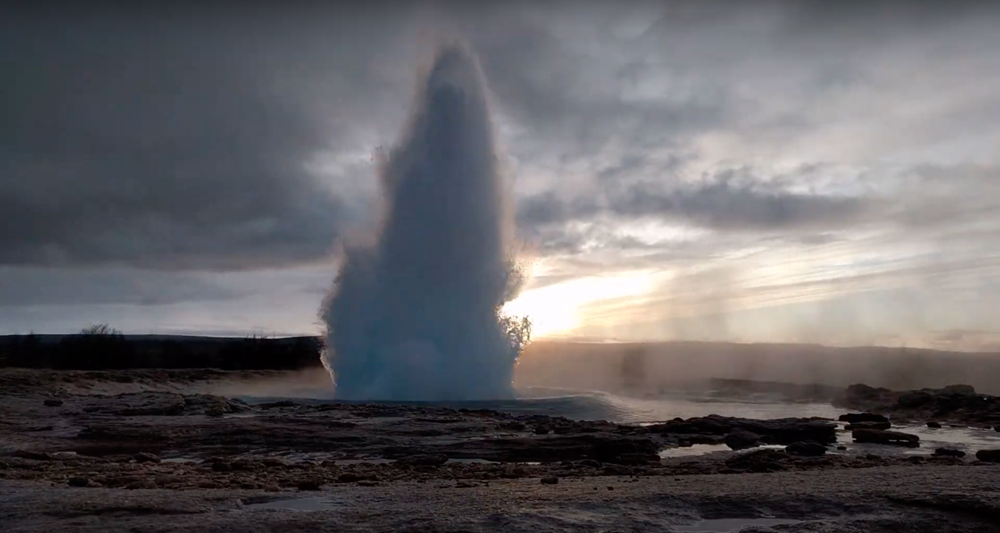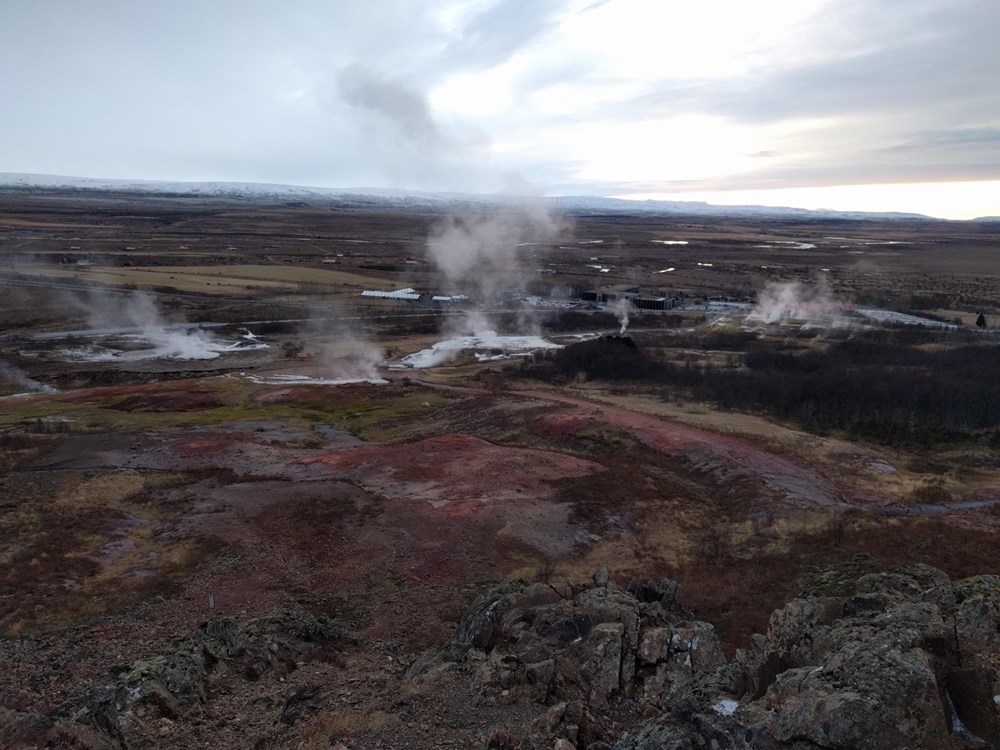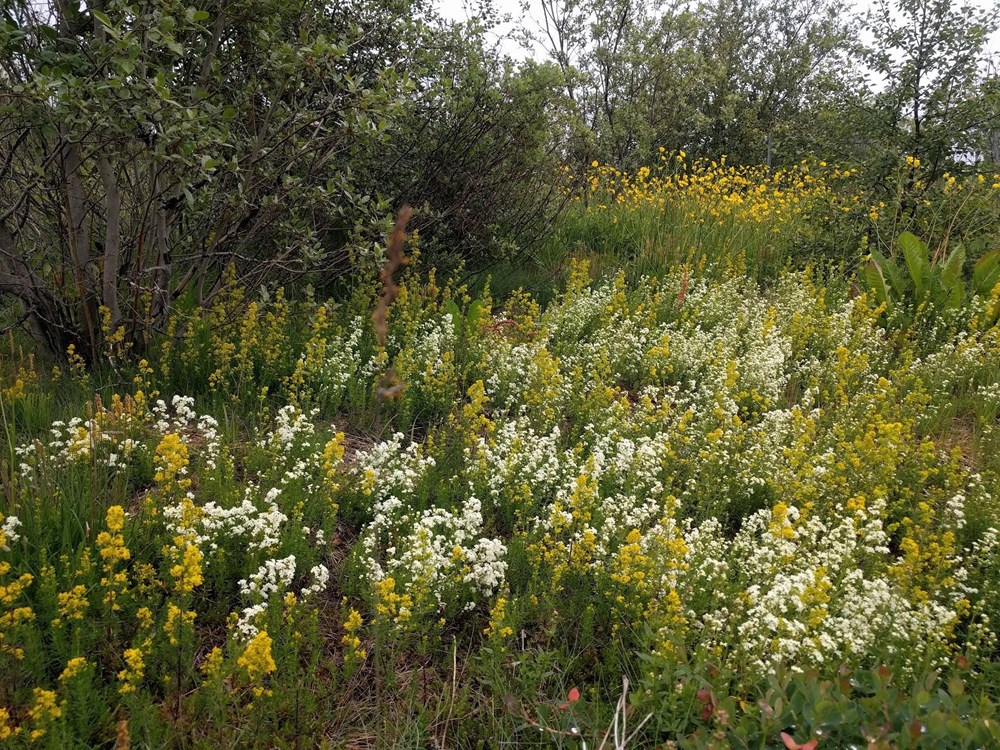Vinna við nýjar heimasíður Umhverfis- og orkustofnunar og Náttúruverndarstofnunar er í gangi. Heimasíða Umhverfisstofnunar er virk á meðan vinnunni stendur. Information in English
Nature and geology

The geyser area lies in the western volcanic belt of Iceland, which explains the geothermal activity of the area. There have been theories that there was a main volcano in the area as liparite has been found around the area, for example in Laugarfell (187 m) which rises above the hot spring area. The high temperature area covers approx. 3 km2with numerous hot springs, but the Geysir area itself is only a small part of it. There are numerous hot springs in the area outside of Geysir, of which Strokkur is the most famous, but amongst other significant ones are Konungshver, Blesi, Litli Geysir, Ótherrishola and Sísjódandi.
In the past, Geysir has been active in varying degrees, but seismic activity in the Southern region has sometimes caused it to stir. After the earthquakes in the Southern region in the year 2000, Geysir livened up again for a while, but has been dormant since. It was last known to have erupted in the year 2016.
In recent years, Strokkur has therefore been the main tourist attraction. Its activity has also fluctuated over the years, but Strokkur still does not behave quite like Geysir, as it erupts in small but powerful eruptions. However, since the geyser does not empty between eruptions (unlike Geysir), the geyser quickly fills up again and eruptions therefore happen at regular intervals. The eruptions in Strokkur can reach up to 30 m in height.


